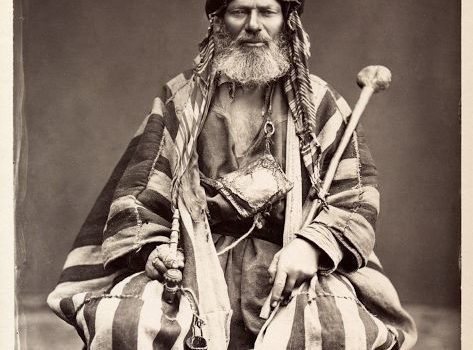Case 954 Anadoluhisarı’ndan Memi b. Tavukçu yedinden işbu sarışın sarı sakallı gök gözlü orta boylu esbâbı arkasında bir çuval ve bir keçe takye Rûsiyyü’l-asl gulâm meclis-i şer‘a ihzâr olunup rıkkıyyetin ve ibâkatın i‘tirâf edip sâhibi nâma‘lûm olmağın hıfz için Üsküdar Zaîmi Alagöz Bey’e teslîm olundu ve yevmî iki akçe takdîr olundu. Case…
Continue reading
Case 23 Mahalle-i Ma‘mûre’de orta boylu sol yanında ve eğninde ve basında altı yerde ve ensesinde eser-i cerâhati ve basında kırmızı zândı ve arkasında lâciverd beylik çukası ile ve ayağında tuman çaksırı ile ve kırmızı papucu ile Habesiyyü’l-asl ve’n-nesl Hasan nâm Arab mâh-ı Zilhicce’nin 10[’uncu] gününde isbu sıfatla muttasıf olan Arab’ı hâliyâ mahalle-i…
Continue reading
The descriptions of the slaves follow centuries-old legal formulae: ethnicity, eye color, skin color, whether the slave’s eyebrows meet (“closed-browed”) or are separate (“open-browed”), hair color, facial hair, and any scars, deformities, or other identifying marks. The court scribes of Üsküdar typically omitted skin and hair color–maybe they considered ethnicity…
Continue reading
Descriptions of runaway slaves offer a rare window into lower-class men’s clothing. The most complete descriptions describe all a man’s visible clothing, from hat to shoes, often with colors and fabrics. In full descriptions, each article of clothing is preceded by a word that explains how the garment is worn: başına,…
Continue reading
Basma means “printed.” Basma may also be a type of cotton cloth; Suraiyi Faroqhi mentions “printed cottons (basma) from Tokat” [link]. Only three garments are listed in the estate records as being printed–a zıbın, a headcloth, and a red tafta came–but there are quite a few printed pillows and a…
Continue reading

Any definition of an Ottoman Turkish word for a garment involves speculation. Words changed definitions radically between the 16th century and the century that modern scholarship coalesced around, the 18th century; and many modern scholars are blithely unaware of this, so they happily describe 16th-century garments with terms that are…
Continue reading

Prince Bayezid’s splendid saz-patterned court kaftan is one of the centerpieces of Topkapi Palace’s collection. It’s also a lesson in how much you can get away with when you know where you can afford to goof. Take a long look at the photo, then check the diagrams and see how…
Continue reading
There were 161 inventories in my original sample: 56 Muslim females 96 Muslim males 3 non-Muslim females 4 non-Muslim males 1 unknown I removed the non-Muslim and unknown inventories because members of different religious groups dressed differently. Of the remaining Muslim inventories, I removed 4 Muslim male inventories because of…
Continue reading
There are at least a dozen types of overgarments, not counting the wild and varied coats that made up military wear. And–this is fun–we have no clear idea what most of them looked like. This is a listing of all the overgarments worn by Istanbulites in the 16th and early…
Continue reading
One of the things we miss in the SCA is the wealth of scholarship online. Readable online In Turkish AKPINARLI, H. Feriha and Zeynep BALKANAL. “16-18. YÜZYILLARDA İSTANBUL’DA ÜRETİLEN KUMAŞLARDA BİTKİSEL BEZEMELERİN İNCELENMESİ” (A Study of the Vegetative Figures on Textiles Manufactured in Istanbul During the 16-18th Centuries).…
Continue reading





